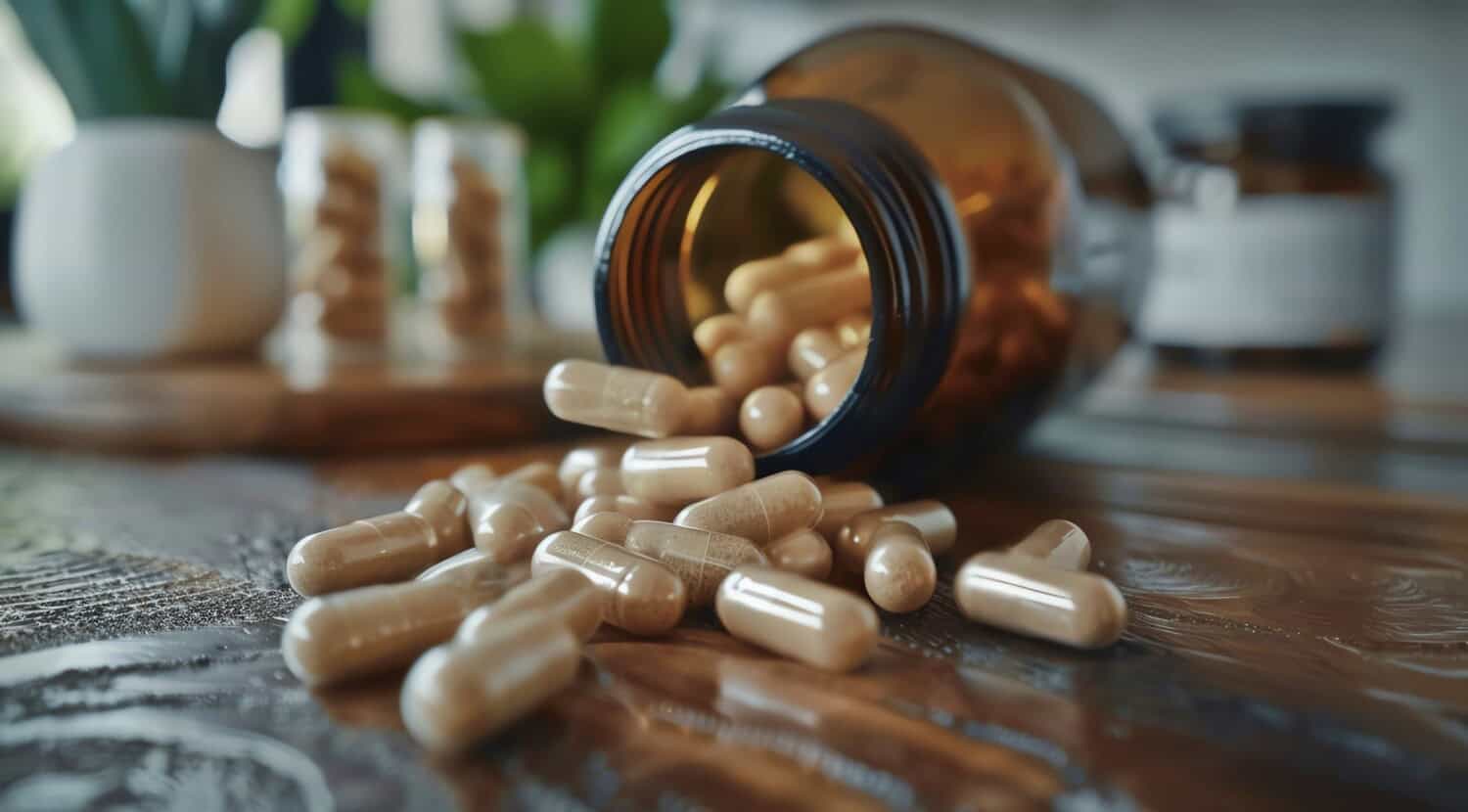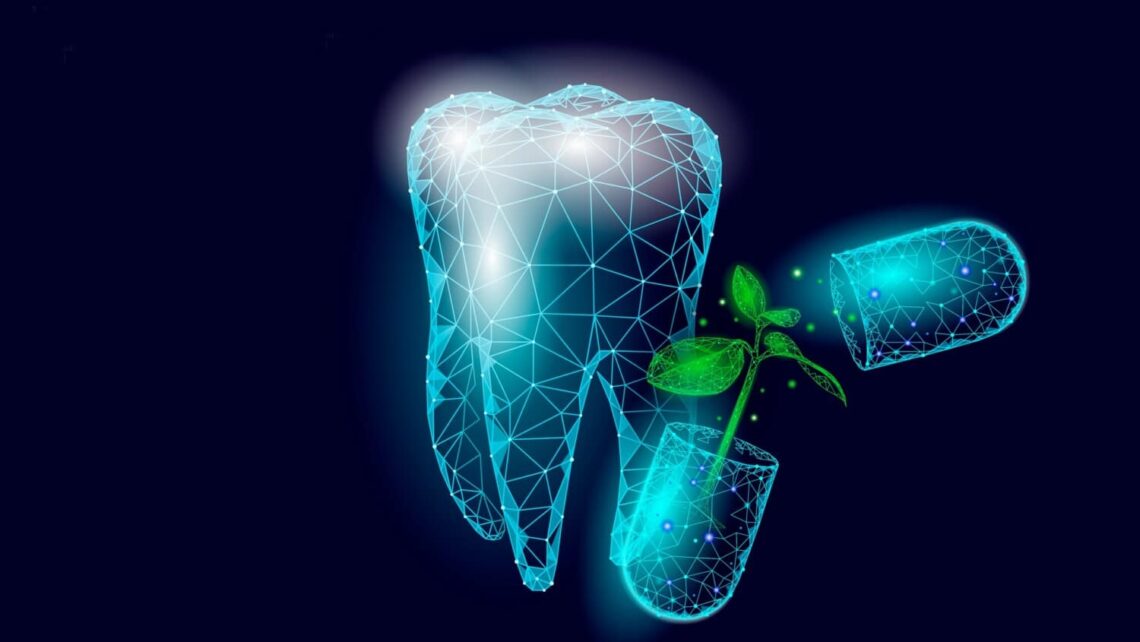For decades, probiotics have been hailed as the heroes of gut health. But the benefits of these “friendly” bacteria extend beyond the digestive system. The mouth, teeming with a diverse community of micro-organisms, is a battleground where a balanced bacterial landscape is crucial for oral health. This is where dental probiotics enter the picture, offering a novel approach to promoting a healthy smile.
The Oral Microbiome
The human mouth is a complex ecosystem harbouring billions of bacteria, fungi, and viruses. This intricate community, known as the oral microbiome, plays a crucial role in oral health. When the balance of these micro-organisms tip in favour of harmful bacteria, it can lead to variety of dental issues, including cavities, gum disease (gingivitis and periodontitis), and bad breath (halitosis) [1].
Traditionally, oral hygiene practices like brushing and flossing focused solely on removing plaque, a biofilm containing both beneficial and harmful bacteria. However, with a growing understanding of the oral microbiome, a huge shift is happening. The focus is now on promoting a healthy balance of bacteria, where “good” bacteria outcompete and neutralise the harmful ones [2].
Can the Probiotic Players Tip the Scales?
Dental probiotics are essentially live micro-organisms, similar to those found naturally in the mouth. They can also be ingested in the form of lozenges, tablets or toothpaste.
The most common strains used in dental probiotics include:
- Lactobacillus strains (L. plantarum, L. rhamnosus)
- Bifidobacterium strains (B. lactis)
- Streptococcus salivarius K12 (BLIS K12) [3, 4]

These “friendly” bacteria are believed to work by:
Directly competing with harmful bacteria for space and nutrients: By colonising the oral cavity, probiotics create a competitive environment that limits the growth of pathogenic bacteria [5].
Producing antimicrobial substances: Certain probiotic strains can produce bacteriocins, which are natural antibiotics that target and kill harmful bacteria [6].
Modulating the immune response: Probiotics can interact with the immune system in the mouth, potentially reducing inflammation and promoting tissue health [7].
What are the Different Forms of Dental Probiotics?
Dental probiotics come in various forms, each with its own advantages:
Lozenges and Chewing Gums: These provide sustained release of probiotics in the mouth, allowing them to interact with the oral microbiome for a longer period.
Tablets and Powders: These offer a convenient way to deliver a concentrated dose of probiotics.
Mouthwashes: Probiotic mouthwashes can help disperse beneficial bacteria throughout the oral cavity, reaching areas that might be difficult to clean with brushing and flossing.
Toothpastes: While the research on the effectiveness of probiotic toothpaste is limited, some products combine probiotics with traditional cleaning ingredients for a potentially synergistic effect.
The Science Behind the Smile
While research on dental probiotics is still in its early stages, several studies have shown promising results. A 2019 review of clinical trials found that probiotic lozenges containing Lactobacillus strains were effective in reducing plaque and gingivitis compared to a placebo [8].
Another study, published in 2020, demonstrated that a toothpaste containing BLIS K12 combined with regular brushing significantly reduced bad breath compared to a regular toothpaste [9].
However, it is important to note that the evidence for dental probiotics is not yet conclusive. More extensive research with larger sample sizes and long-term follow-up is needed to fully understand their efficacy for various oral health conditions.

Are Dental Probiotics a Magic Bullet?
Dental probiotics are a promising addition to your oral care routine, but they are not a replacement for good oral hygiene practices. Brushing twice and flossing once daily, and maintaining a healthy diet are necessary for good oral health. Additionally, the long-term effects of dental probiotics and their interaction with other medications are still under investigation.
Here are some key considerations when exploring dental probiotics:
- Choose a reputable brand with a clear list of probiotic strains and colony-forming units (CFUs). CFUs indicate the number of viable bacteria in a dose [10].
- Look for products with strains backed by scientific research.
- Consult your dentist before using dental probiotics, especially if you have compromised immune function or any underlying medical conditions.
The Future of Oral Health
The rise of dental probiotics signifies a shift towards a more holistic approach to oral health. By harnessing the power of the oral microbiome, we can move beyond simply removing plaque and towards promoting a healthy balance of bacteria. As research progresses, dental probiotics may become a valuable tool used alongside traditional methods to create a future of healthier smiles.
References:
- Hajishengallis, G., et al. “Oral microbiome and the pathogenesis of periodontal and peri-implant diseases.” Nature Reviews. Microbiology (2017) 15(12): 711-726. https://www.nature.com/nrmicro/
- Marsh, P. D. “Oral microbiology and dental biofilm formation.” Journal of Dental Research (2010) 89(2): 200-208.
Want to book an appointment?
Book online by clicking here. Call our friendly team on 3390 6100 or email us.











This is fascinating! I’ve always thought of bacteria as the enemy, but learning about the benefits of good bacteria for oral health is eye-opening. It’s great to see science advancing in such positive ways. Thanks for sharing this insightful post!